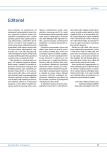Precancerous Conditions in the ENT Area
Authors:
B. Gál 1; L. Mrzena 2; P. Hort 3
Authors‘ workplace:
Klinika otorinolaryngologie a chirurgie hlavy a krku LF MU a FN u sv. Anny v Brně
1; Klinika otorinolaryngologie a chirurgie hlavy a krku 1. LF UK a FN v Motole
2; ORL oddělení, Vojenská nemocnice Brno
3
Published in:
Klin Onkol 2013; 26(Supplementum): 13-16
Overview
An important part of tumor prevention is early detection, diagnosis, treatment and screening of precancerous conditions. Correct detection and screening of premalignant lesions leads to early diagnosis of a malignant process which provides a better chance to completely cure the patient and also predicts better quality of life. Precancerous conditions look like whitish, red or mixed mucose lesions (leukoplakia, erytroplakia, erytroleukoplakia) which are visible during clinical examination. Nevertheless, these mucose changes are not absolutely conclusive. Therefore, histological testing is necessary for diagnosis and determination of biological potencial of precancerous lesions. Precancerous lesions as a term of histological terminology means dysplasia. The risk of progression of dysplasia into a carcinoma depends on a grade of dysplasia. The conservative or surgical treatment is chosen according to localisation and grade of dysplasia.
Key words:
precancerous condition – premalignant lesion – ENT – dysplasia – leukoplakia – erytroplakia – carcinoma in situ
The authors declare they have no potential conflicts of interest concerning drugs, products, or services used in the study.
The Editorial Board declares that the manuscript met the ICMJE “uniform requirements” for biomedical papers.
Submitted:
15. 9. 2013
Accepted:
17. 10. 2013
Sources
1. Badaracco G, Venuti A, Morelo R et al. Human papillomavirus in head and neck carcinomas: prevalnce, physical status and relationship with clinical/ pathological parameters. Anticancer Res 2000; 20(2B): 1301– 1305.
2. Ward PH, Hanson DG. Reflux as an etiological factor of carcinoma of the laryngopharynx. Laryngoscope 1988; 98(11): 1195– 1199.
3. Barnes L, Eveson JW, Reichard P et al. Pathology and genetics of head and neck tumours. WHO classification of tumours. Lyon: IARCS Press 2005: 140– 143.
4. Blackwell KE, Fu YS, Calcaterra TC. Laryngeal dysplasia. A clinicoptahological study. Cancer 1995, 75(2): 457– 463.
5. Plch J, Par I, Navratilova I et al. Long term follow‑up study of laryngeal precancerous. Auris Nasus Larynx 1998; 25(4): 407– 412.
6. Fleskens S, Slootweg P. Grading systems in head and neck dysplasia their prognostic value, weaknesses and utility. Head Neck Oncol 2009; 1: 11.
7. Gál B, Hort P. Prekancerózy hrtanu. Abstrakt 182. In: Sborník abstrakt. XXXIV. Brněnské onkologické dny a XXIV. Konference pro nelékařské zdravotnické pracovníky. Brno, 22.–24. dubna 2010. Brno: Masarykův onkologický ústav 2010.
8. Gale N, Kambic V, Michaels L et al. The Ljubljana classification: a practical strategy for the diagnosis of laryngeal precancerous lesions. Adv Anat Pathol 2000; 7(4): 240– 251.
9. Baletic N, Petrovic Z, Pendjer I et al. Autoflorescent diagnostics in laryngeal pathology. Eur Arch Otorhinolaryngol 2004, 261(5): 233– 237.
10. Arens C, Glanz H, Dreyer T et al. Compact endoscopy of the larynx. Ann Otol Rhinol Laryngol 2003; 112(2): 113– 119.
Labels
Paediatric clinical oncology Surgery Clinical oncologyArticle was published in
Clinical Oncology

2013 Issue Supplementum
Most read in this issue
- Precancerous Conditions and Lesions of the Stomach
- Premalignancies of Colon
- Preinvasive Lesions in Gynecology – Vulva
- Precancerous Conditions in the ENT Area
